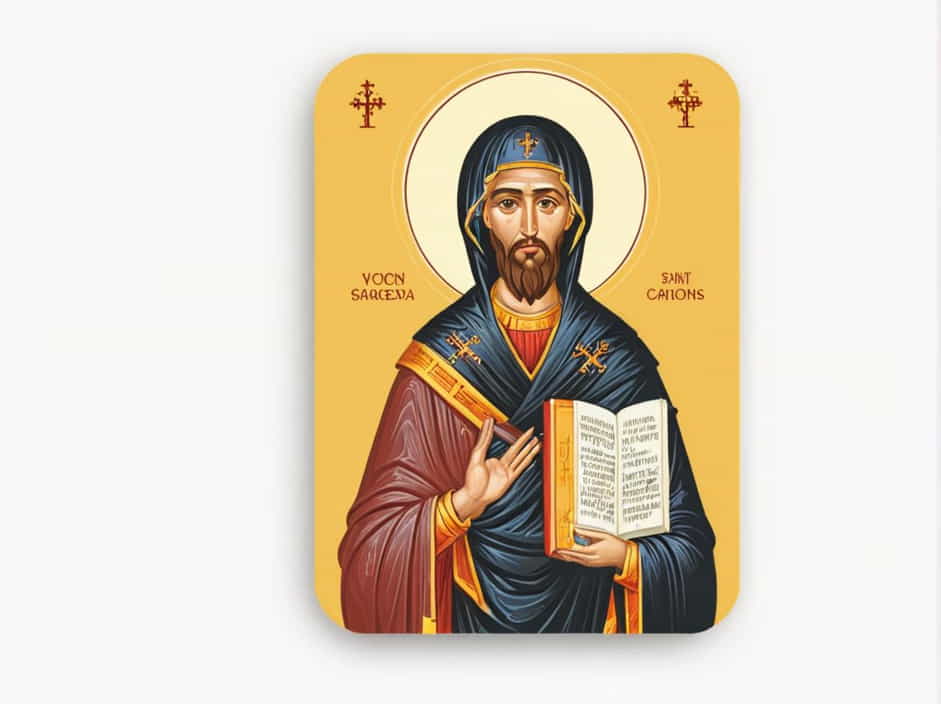St. Vincent of Saragossa is one of the most revered early Christian martyrs. As the Patron Saint of Deacons, Martyrs, and Lisbon, his legacy has inspired countless believers. His unwavering faith and courage in the face of brutal persecution make him an enduring symbol of Christian devotion.
Who Was St. Vincent of Saragossa?
Early Life and Vocation
St. Vincent was born in Huesca, Spain, during the 3rd century. He was raised in a Christian family and dedicated his life to serving God. Vincent became a deacon in Saragossa, assisting his bishop, St. Valerius, in preaching and ministering to the faithful.
As a deacon, his responsibilities included proclaiming the Gospel, assisting in liturgical services, and caring for the poor. His devotion to spreading Christianity eventually led to his persecution under the Roman Emperor Diocletian.
Arrest and Persecution
During the Diocletianic Persecution, Christianity was outlawed, and many Christians faced severe punishment. St. Vincent and Bishop Valerius were arrested by Dacian, the Roman governor of Spain.
Since Valerius had a speech impediment, Vincent often preached on his behalf. This made him a particular target for the authorities, who saw him as a threat. Dacian demanded that Vincent renounce his faith, but he refused.
Martyrdom and Death
St. Vincent endured horrific torture for his unwavering faith. Historical accounts describe how he was:
-
Stretched on the rack to tear his limbs apart.
-
Burned with heated iron hooks and scorched on a gridiron.
-
Thrown into a prison cell covered with sharp pottery shards.
Despite his suffering, Vincent never renounced his faith. His courage and perseverance inspired other Christians, strengthening their resolve. He ultimately died from his injuries around 304 AD.
After his death, his body was thrown into the sea, but according to tradition, it miraculously washed ashore, preserved by divine intervention.
St. Vincent as the Patron Saint
1. Patron Saint of Deacons
St. Vincent was a dedicated deacon, serving the Church with humility and devotion. His commitment to spreading the Gospel and helping the needy makes him a model for deacons worldwide.
Deacons look to him as an example of faithful service, courage, and dedication to the Church’s mission. His feast day, January 22, is a special time for deacons to reflect on their vocation.
2. Patron Saint of Martyrs
His steadfast faith in the face of unimaginable torture makes him a powerful patron for all Christian martyrs. Many persecuted Christians throughout history have found inspiration in his story.
St. Vincent’s intercession is often sought by those facing spiritual trials, persecution, and suffering for their beliefs.
3. Patron Saint of Lisbon and Valencia
St. Vincent’s influence extends beyond Spain. He is the patron saint of Lisbon, Portugal, where his relics were enshrined after being transported from Spain.
He is also honored in Valencia, where a major cathedral is dedicated to him. His legacy continues to be celebrated in these regions with annual processions and religious festivals.
The Symbolism of St. Vincent
St. Vincent is often depicted in Christian art with specific symbols that reflect his life and martyrdom:
-
A deacon’s dalmatic – Representing his role as a deacon.
-
A gridiron or flames – Symbolizing his torture by fire.
-
A raven – A reference to the legend that ravens protected his body after his death.
-
A palm branch – A traditional symbol of martyrdom and victory over persecution.
These symbols serve as reminders of his faith, suffering, and ultimate triumph through Christ.
Miracles and Legacy
The Protection of His Relics
According to legend, after his death, his body was cast into the sea. However, it was miraculously preserved and later recovered. His relics were eventually transferred to Lisbon, where they became a source of pilgrimage.
During the Muslim occupation of Spain, his relics were moved several times for safekeeping. Eventually, they found a permanent home in the Monastery of St. Vincent in Lisbon.
Influence on Christian Devotion
St. Vincent’s unwavering faith and heroic endurance have made him one of the most celebrated early martyrs. Churches, monasteries, and chapels have been dedicated to him throughout Europe.
He remains an inspiration for Christians facing difficulties, reminding them of the power of faith and perseverance.
Lessons from St. Vincent’s Life
1. Stand Firm in Faith
St. Vincent’s story teaches us that faith is worth defending, even in the face of suffering. He remained strong despite brutal persecution, setting an example for all believers.
2. Serve Others with Humility
As a deacon, Vincent dedicated his life to serving others, particularly the poor and marginalized. His commitment to charity and service is a model for all Christians.
3. Find Strength in Suffering
Despite extreme torture, Vincent never lost hope. His life reminds us that suffering can be a path to spiritual victory when endured with faith and trust in God.
How to Honor St. Vincent of Saragossa Today
1. Celebrate His Feast Day
On January 22, Catholics around the world remember St. Vincent’s courage and devotion. Attending Mass, praying, and reflecting on his life are great ways to honor him.
2. Pray for the Persecuted Church
St. Vincent is a patron of those suffering for their faith. Many Christians today still face persecution. Praying for them and supporting religious freedom initiatives keeps his spirit alive.
3. Embrace Service and Charity
Following his example as a deacon, we can commit to serving others, whether through charity, ministry, or simple acts of kindness.
St. Vincent of Saragossa is a shining example of courage, faith, and dedication. As the Patron Saint of Deacons, Martyrs, and Lisbon, his influence extends far beyond his time.
His life reminds us that no matter the hardships we face, our faith in God can give us the strength to endure. Through his intercession, Christians continue to find inspiration in his unwavering commitment to Christ.
